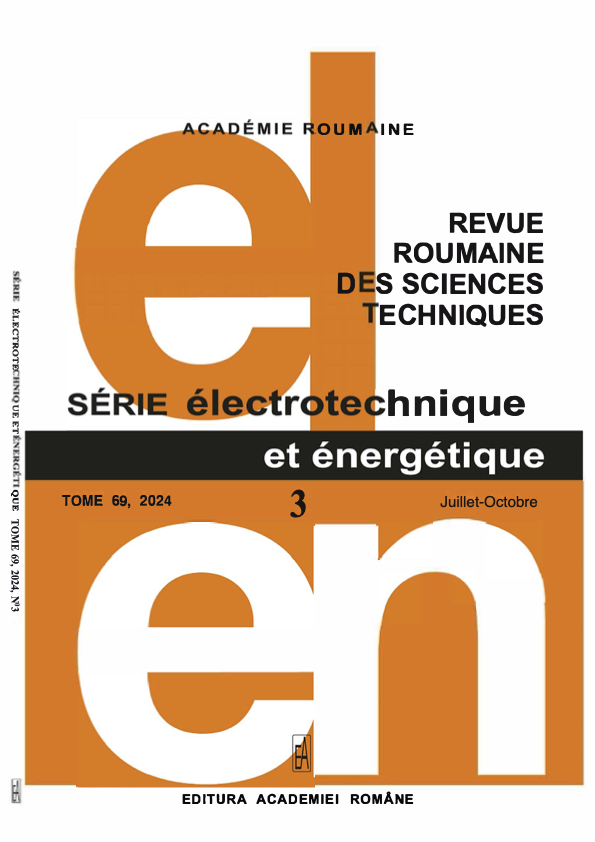DEVELOPMENT AND REALIZATION OF AN AUDIOMETER WITH AUTOMATIC TESTS AND INTELLIGENT DIAGNOSTICS USING NEURAL NETWORKS
DOI:
https://doi.org/10.59277/RRST-EE.2024.69.3.19Keywords:
Audiometer, Arduino, Graphical user interface (GUI) MATLAB, Intelligent diagnosis, Neural network modelAbstract
An audiometer is a medical device that measures hearing state; most audiometers are for manual and physical use. The audio signal generator generates all the frequencies between 20 Hz and 22 kHz. This project will produce a tone-based audiometer (software and hardware) based on the Arduino board with GUI MATLAB. This work allowed us to do the test automatically with intelligent diagnosis. The smart part is based on the Neural Network Model. Our work comprises an electronic card and three parts or interfaces: Interface 1: subject management, Interface 2: hearing test, and Interface 3: audiogram. The tests and results of the prototype are very satisfactory; this is a positive sign that the prototype is working as expected and is a viable solution.
References
(1) B.A. Adekola et al., Hearing loss, gait and balance impairments and falls among individuals with sub-acute stroke: A comparative cross-sectional study, Heliyon, 10, 5 (2024).
(2) M. Haile Lydia et al., Hearing loss prevalence and years lived with disability, 1990–2019: findings from the Global Burden of Disease Study 2019, The Lancet, 397, 10278, pp. 996–1009 (2021).
(3) ***https://en.wikipedia.org/wiki/Sound, Accessed on 18.05.2024.
(4) ***World Health Organization, Deafness and Hearing Loss, Newsroom fact sheets, WHO. 2021, Accessed 15 May 2021.
(5) D. Lammers et al., iHear: Canadian medical student based hearing assessment program for grade school children using a tablet audiometer, Journal of Otolaryngology-Head & Neck Surgery, 50, 1, pp 50–60 (2021).
(6) K. Chung, Alternative audiometric calibration methods: Evaluation of sound level measuring apps for audiometric calibration. Journal of Communication Disorders, 105, 106351 (2023).
(7) K. Hopping, A. Lata Krishnan, Tablet audiometry: Comparison of automated game-based and tester-assisted procedures in children, International Journal of Pediatric Otorhinolaryngology 152, 111006 (2022).
(8) M.T. El-Basheer, Study on audiometer calibration at the extended high-frequency range 8–16 kHz, Noise & Vibration Worldwide, 53,1-2, pp. 24-37 (2022).
(9) O. Hülya, D.H. Turan, K.A. Arzu, The effects of music listening time with headphones on hearing thresholds among the young population, The Egyptian Journal of Otolaryngology, 40, 1: 13 (2024).
(10) B. Xiong et al., Missed hearing loss in tinnitus patients with normal audiograms, Hearing research, 384, 107826 (2019).
(11) R.S. Khandpur, Compendium of Biomedical Instrumentation, 3 Volume Set, John Wiley & Sons, (2020).
(12) C. Drugă et al. Designing and Creating a Smart Audiometer Using an Arduino Platform, Acoustics and Vibration of Mechanical Structures—AVMS 2019: Proceedings of the 15th AVMS, Timisoara, Romania, May 30–31, 2019, Springer International Publishing (2021).
(13) B. McPherson, M.M. S. Law, M.S.M. Wong, Hearing screening for school children: comparison of low‐cost, computer‐based and conventional audiometry, Child: Care, health and development, 36, 3, pp. 323-331(2010).
(14) M. Bastianelli et al., Adult validation of a self-administered tablet audiometer, Journal of Otolaryngology-Head & Neck Surgery, pp. 48-59 (2019).
(15) B. Ponnuswamy et al., wind turbine fault modeling and classification using cuckoo-optimized modular neural networks, Rev. Roum. Sci. Techn. – Électrotechn. Et Énerg., 68, 4, pp. 369–374 (2023).
(16) I. Yaichi, A. Semmah, P. Wira, Control of doubly fed induction generator using artificial neural network controller, Rev. Roum. Sci. Techn. – Électrotechn. Et Énerg., 68, 1, pp. 46–51 (2023).
(17) W. Issaadi, S. Issaadi, Influence of the sampling frequency on various maximum power point tracking commands, Rev. Roum. Sci. Techn. – Électrotechn. Et Énerg., 68, 1, pp. 12–17 (2023).
(18) F. Beloucif, A. Boudefel, A. Guerroui, A. Lemzadmi, A. Moussaoui, Artificial neural network prediction parameters of 10% SF6-90% N2 mixture, Rev. Roum. Sci. Techn. – Électrotechn. Et Énerg., 67, 2, pp. 139–144 (2022).
(19) S. M. Ulaganathan, R. Muniraj, R. Vijayanand, D. Devaraj, Novel solar photovoltaic emulation for validating the maximum power point algorithm and power converter, Rev. Roum. Sci. Techn. – Électrotechn. Et Énerg., 68, 4, pp. 407–412 (2023).
(20) G.G. Tolun, Y.A. Kaplan, Development of backpropagation algorithm for estimating solar radiation: a case study in Turkey, Revue Roumaine des Sciences Techniques—série Electrotechnique et Energétique, 68, 3, pp. 313–316 (2023).
(21) ***mathworks.com/discovery/arduino-programming-matlab-simulink.html, Accessed on 18.05.2024.
(22) C. Keskinoğlu, A. Aydin, Audiometer design and test with bone conduction headphones for engineering education, 7th International Zeugma Conference on Scientific Research, pp. 278–284 (2022).
(23) R. Kumar, S.K. Munjal, A. Sharma, M.N. Alam, N.K. Panda, Effect of face masks on speech understanding: a clinical perspective during speech audiometry, Journal of Otology, 17, 3, pp. 140–145 (2022).
Downloads
Published
Issue
Section
License
Copyright (c) 2024 REVUE ROUMAINE DES SCIENCES TECHNIQUES — SÉRIE ÉLECTROTECHNIQUE ET ÉNERGÉTIQUE

This work is licensed under a Creative Commons Attribution-NonCommercial-NoDerivatives 4.0 International License.


